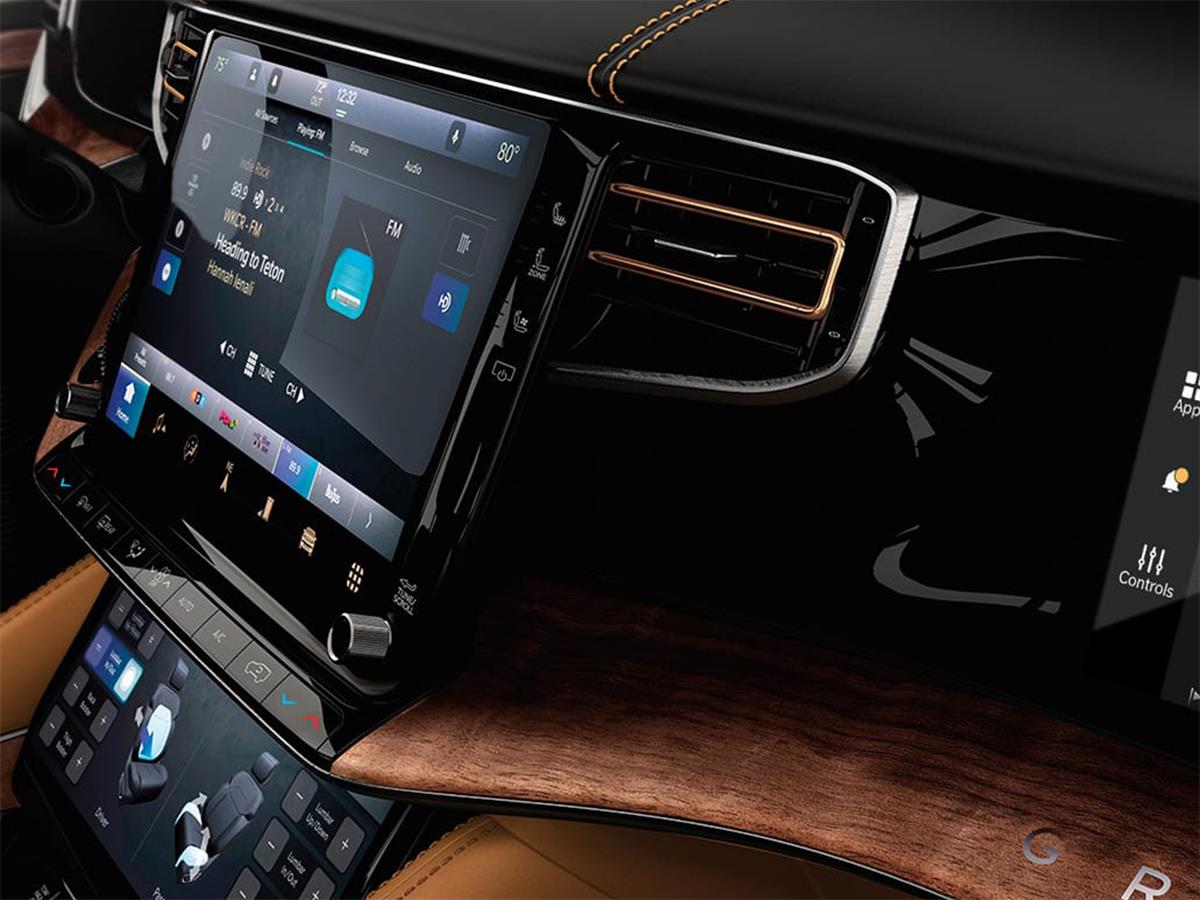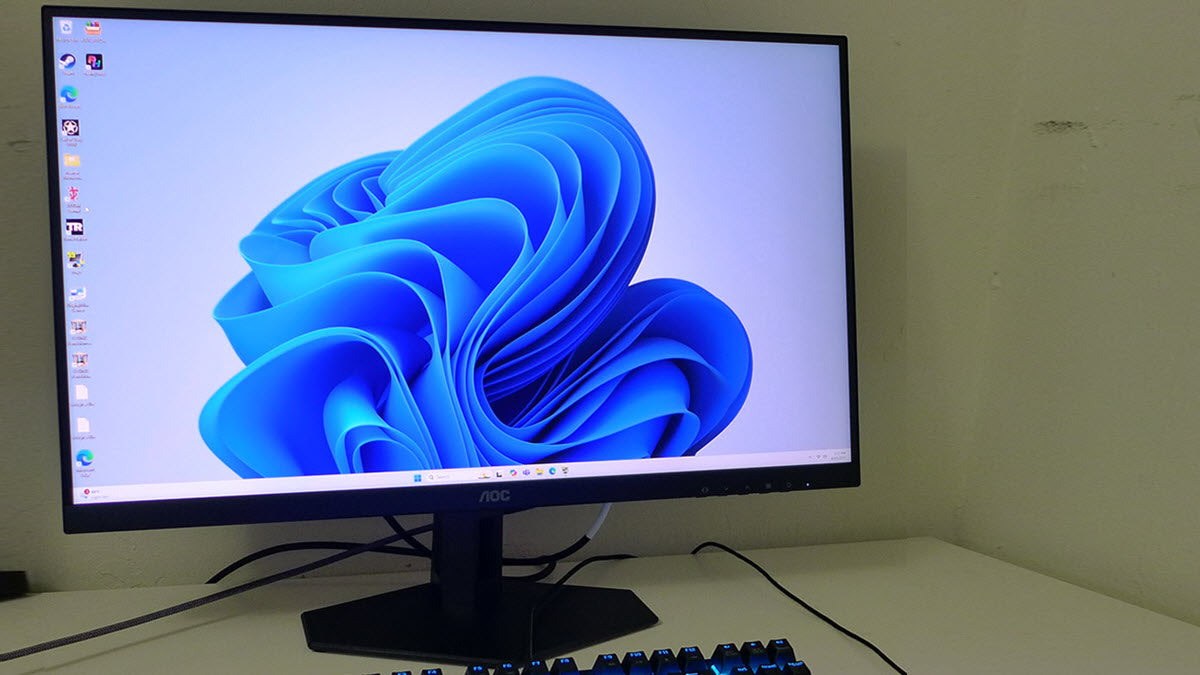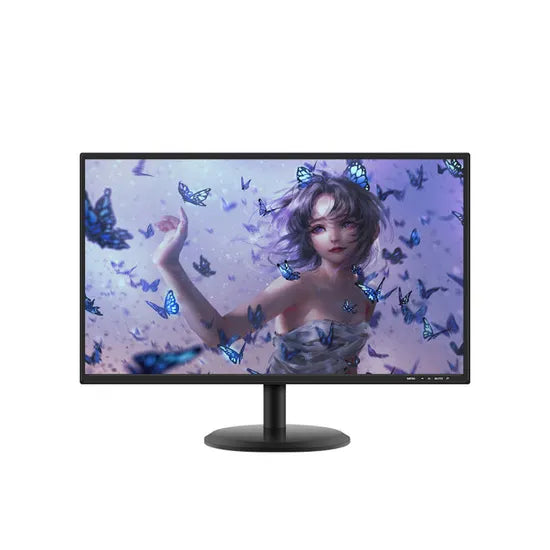TFT (Thin-Film Transistor) is primarily used in liquid crystal displays (LCDs) to enhance picture quality, powering devices like smartphones and tablets; for example, modern phone TFT screens often deliver 1080p (1920×1080 pixels) resolution with 5-10ms response times, ensuring sharp, smooth visuals.
Everyday Display Screens
6.1–6.7 inches is the sweet spot for mid-range to flagship models (think iPhone 15 or Samsung Galaxy A55), using TFT LCDs or their cousin OLED (which still relies on TFT backplanes). Why that size? Because 6.1 inches hits a balance: big enough for videos, small enough to use one-handed. Resolution-wise, 720p (1280×720 pixels) is standard for budget phones (400), but flagships crank it up to 2K (2560×1440 pixels) or even 4K (3840×2160 pixels) in foldables like the Samsung Galaxy Z Fold 5. Pixel density (PPI)—how sharp it looks—follows: budget phones hit ~270 PPI, while flagships soar to 460 PPI (Galaxy S24 Ultra).
A 10.9-inch iPad Air (M2, 2024) uses a Liquid Retina TFT LCD with 2360×1640 resolution and 264 PPI—sharp enough for PDFs or drawing. Lower-cost tablets (like Amazon Fire HD 10) stick to 1280×800 resolution and 163 PPI, which is “good enough” for Netflix but not great for reading small text. Here’s a key stat: a 10.9-inch TFT LCD tablet sips ~5–7 watts during video playback, vs. ~8–10 watts for an OLED (though OLEDs save power with black pixels).
Most 13–15-inch ultrabooks (think MacBook Air M3 or Dell XPS 13) use 1080p (1920×1080) TFT IPS panels—IPS is a type of TFT tech that improves color and viewing angles. Why 1080p? Because at 13 inches, 1080p gives ~166 PPI, which is sharper than 720p (117 PPI) and doesn’t drain battery like 4K (which would need ~250 PPI but suck 15+ watts). Gamers or pros might splurge on 2.8K (2880×1800) TFT panels (e.g., ASUS ROG Zephyrus G14), which bump PPI to ~242 and refresh rates to 165Hz—great for fast-paced games, but expect to pay $1,500+ extra.
Most are 15.6 inches with 1920×1080 resolution and 300 nits brightness (bright enough for a sunny café). They connect via HDMI or USB-C, draw ~3–5 watts (thanks to TFT efficiency), and cost 300—way cheaper than a second laptop.
Here’s a quick breakdown of how TFT specs stack up across devices:
|
Device Type |
Typical Size (Inches) |
Resolution |
PPI |
Brightness (Nits) |
Key Use Case |
|---|---|---|---|---|---|
|
Budget Smartphone |
6.1–6.5 |
1280×720 (720p) |
~270 |
400–500 |
Calls, social media, light gaming |
|
Flagship Phone |
6.7–6.8 |
2560×1440 (2K) |
~460 |
1,000–5,000 (peak) |
Photos, 4K video, outdoor use |
|
Mid-Range Tablet |
10.9–11.5 |
2360×1640 |
~264 |
400–500 |
Streaming, note-taking |
|
Ultrabook Laptop |
13–15 |
1920×1080 (1080p) |
~166 |
300–400 |
Work, browsing, light creative |
|
Portable Monitor |
15.6 |
1920×1080 (1080p) |
~141 |
300 |
Extra screen for travel |
It’s not the fanciest tech (OLED or MicroLED might be brighter or thinner), but it’s reliable, affordable, and gets the job done for 90% of daily tasks.
Touchscreen Devices
TFT LCDs dominate touchscreen tech because they pair affordable production (5 per panel for budget phones) with responsive performance. For example, your average smartphone (6.1-inch, 600) uses a TFT LCD with 120Hz refresh rate (how fast the screen updates) and 240Hz touch sampling rate (how often it “reads” your touch). That combo cuts input lag to 8ms—faster than the 15ms human eye can notice, so swipes feel “instant.”
A 10.9-inch iPad (mid-2024) uses a Liquid Retina TFT LCD with 2360×1640 resolution (264 PPI) and 120Hz ProMotion—so when you draw with Apple Pencil, the stylus tracks at 240Hz, translating pen movements to pixels with <1mm error. Cheaper tablets (like Amazon Fire HD 10) drop to 60Hz refresh rate and 120Hz touch sampling, which is still “smooth” for scrolling but feels jittery if you’re sketching.
A typical self-service kiosk (7–10 inches) has a gorilla glass 3+ layer (scratch-resistant) and survives 500,000+ touch cycles (that’s 10+ years of 10 taps/day). They run at 60Hz refresh rate (lower power) but keep touch sampling at 100Hz to avoid lag when you’re rushing to buy a ticket. 1,000–1,500 nits—enough to fight glare in direct sunlight, unlike cheaper panels that wash out at 400 nits.
Modern infotainment screens (12.3–15.6 inches) use TFT LCDs with local dimming zones (up to 1,000 zones in premium models) to boost contrast. For example, BMW’s iDrive 8.5 system on a 14.9-inch screen hits 1,500 nits peak brightness (so you can see GPS directions at noon) and supports multi-touch gestures (pinch-to-zoom, 3-finger swipe) with <5ms response time. Even in freezing weather (-20°C), TFT panels maintain 99% touchscreen accuracy—better than resistive touchscreens, which fail below 0°C.
Public Digital Signs
Think of those 15–30-foot tall screens in Times Square: they use 65–85-inch TFT panels (or tiled arrays) with 2500–5000 nits peak brightness—that’s 5–10x brighter than a phone screen—to cut through sunlight. For example, Samsung’s OH55B outdoor display uses TFT LCDs with 5000 nits brightness and 1500:1 contrast ratio, keeping ads visible even at high noon. Their gorilla glass 5+ layers handle scratches from debris, and the panels survive 50,000+ hours of continuous use (that’s 5.7 years at 24/7 playback). Cost-wise, a 15-foot TFT screen costs ~30,000 upfront, but lower maintenance (no bulb replacements like old projectors) saves ~$5,000/year vs. legacy systems.
At bus stops or train platforms, 32–55-inch TFT panels show real-time arrivals with <200ms refresh rates—so if a bus is 2 minutes late, the screen updates before you finish checking your watch. For example, New York City’s MTA uses 55-inch TFT LCDs with 1000 nits brightness (fog-resistant) and -40°C to 85°C operating range (works in blizzards or 100°F heat). They last 10+ years (vs. 3–5 years for older LED signs) and cost ~8,000 per unit—cheaper than replacing cracked LCDs every few years.
A 43–75-inch TFT screen at a mall entrance might let you search for stores with a 10-point touchscreen (supports 10 fingers at once) and <10ms touch response time—so tapping “coffee shop” brings up a map in half a second. These panels use IPS TFT panels for wide viewing angles (178°), so someone in a food court 50 feet away still sees the “sale” banner clearly. Energy use? Just 30–50 watts (vs. 100+ watts for old plasma screens), cutting annual electricity bills by ~$200 per screen.
A 32–43-inch TFT in a hospital lobby shows wait times with 60Hz refresh rates (smooth animations) and 400 nits brightness (easy to read in bright lobbies). They’re also energy-star certified (using ~25 watts) and come with built-in anti-glare coatings—no more squinting at schedules. For schools, these screens display emergency alerts with <500ms trigger time (critical for lockdowns or fire drills) and survive 100,000+ touch cycles (kids tapping “recess time” won’t break them).
Here’s a quick breakdown of how TFT public signs stack up across key use cases:
-
Outdoor Advertising: 65–85-inch tiled TFT panels, 2500–5000 nits brightness, 60Hz refresh rate, gorilla glass 5+ scratch resistance, 30k upfront cost, 1k annual maintenance.
-
Transit Info Screens: 32–55-inch TFT LCDs, 1000–2000 nits brightness, <200ms refresh rate, -40°C to 85°C operating range, 8k per unit, 400 annual maintenance.
-
Mall Directories: 43–75-inch IPS TFT panels, 400–800 nits brightness, 60Hz refresh rate, 10-point touchscreen (50M cycles), 300 annual maintenance.
-
Hospital Wayfinding: 32–43-inch TFTs, 400–600 nits brightness, 60Hz refresh rate, anti-glare coating (no yellowing), 250 annual maintenance.
Whether you’re a city needing 100+ bus stop screens or a mall wanting 5 directories, TFT panels are cheap to mass-produce, easy to install (modular designs), and built to outlast the competition.
Instrument Panels & Tools
Take Tesla’s Model 3: its 15-inch centered TFT display (1920×720 resolution, 292 PPI) replaces a speedometer, tachometer, and fuel gauge with a single customizable screen. It updates speed 60 times per second (60Hz refresh rate) and shows real-time battery range, Autopilot status, and navigation arrows—all visible in 1,000–1,500 nits brightness (fights harsh sunlight). Compare that to a 2010 Honda Civic’s analog cluster: 3 small gauges with no customization, legible only at arm’s length. Modern TFT clusters from brands like Continental use IPS panels (178° viewing angles) so you see critical info even when glancing sideways. They survive -40°C to 85°C (Arctic cold to desert heat) and last 10+ years (vs. 5–7 years for analog gauges prone to mechanical wear).
A Siemens S7-1500 PLC panel uses a 10.1-inch TFT LCD (1280×800 resolution, 167 PPI) to display conveyor belt speeds, temperature, and pressure. It detects anomalies like a 2°C temperature spike in 5ms (faster than a human blink) and supports 5-point capacitive touch (works with gloves). Built for factories, it’s IP65-rated (dust/waterproof) and withstands 500,000+ touch cycles (10+ years of operator use). Cost? ~800 (vs. 150/year in power vs. older LCDs).
A GE Healthcare patient monitor uses a 12.1-inch TFT screen (1024×768 resolution, 106 PPI) to show heart rate, blood pressure, and SpO₂ levels. In operating rooms, its 800 nits brightness cuts through surgical lights, while a 1000:1 contrast ratio differentiates “normal” (70 bpm) from “critical” (50 bpm) heart rates at a glance. Response time? 8ms—smooth waveforms during CPR, no lag. It’s also FDA-compliant (±0.5% accuracy) and has anti-microbial coatings (reduces hospital infections by ~15%) that survive 10,000+ alcohol wipes (no yellowing).
John Deere’s S700 combine harvester has a 12-inch TFT display (1920×720 resolution, 292 PPI) showing real-time yield maps, moisture levels, and fuel use. Its GPS updates position 10x/sec (accuracy within 2 inches), letting operators adjust settings on-the-fly. A 10-point multi-touch screen lets farmers pinch-to-zoom on yield data, and Gorilla glass 3 resists scratches from dirt and crop debris. Operating from -30°C to 60°C (pre-dawn frosts to midday heat), it saves operators ~30 minutes/day in manual adjustments—boosting yields by 5–8% annually.
Here’s how TFT instrument panels and tools stack up across key applications:
|
Application |
Typical Size (Inches) |
Resolution |
Brightness (Nits) |
Refresh Rate |
Key Durability Features |
Cost per Unit (USD) |
Lifespan |
|---|---|---|---|---|---|---|---|
|
Car Dashboards |
3.5–15 |
1024×768–1920×720 |
800–1,500 |
60Hz |
-40°C to 85°C, IPS panels (178° viewing) |
500 |
10+ years |
|
Industrial Control Panels |
7–12 |
1024×768–1920×1080 |
400–800 |
5–8ms |
IP65-rated, 500,000+ touch cycles |
800 |
10+ years |
|
Medical Monitors |
10–15 |
1024×768–1920×1080 |
800–1,200 |
8–12ms |
Anti-microbial coating, ±0.5% accuracy |
1,500 |
8–12 years |
|
Ag Equipment Displays |
10–15 |
1920×720–2560×1440 |
400–800 |
5–10Hz GPS |
Gorilla glass 3, -30°C to 60°C operation |
700 |
8–10 years |
Read more

A TFT LCD screen, short for Thin-Film Transistor Liquid Crystal Display, uses a grid of tiny transistors (TFT array) to precisely control liquid crystals, which filter light from a backlight (often...

TFT screens generally offer solid everyday durability, with most models withstanding around 1,000 hours of continuous use without noticeable fading and resisting minor shocks from 1-meter drops ont...




Leave a comment
This site is protected by hCaptcha and the hCaptcha Privacy Policy and Terms of Service apply.